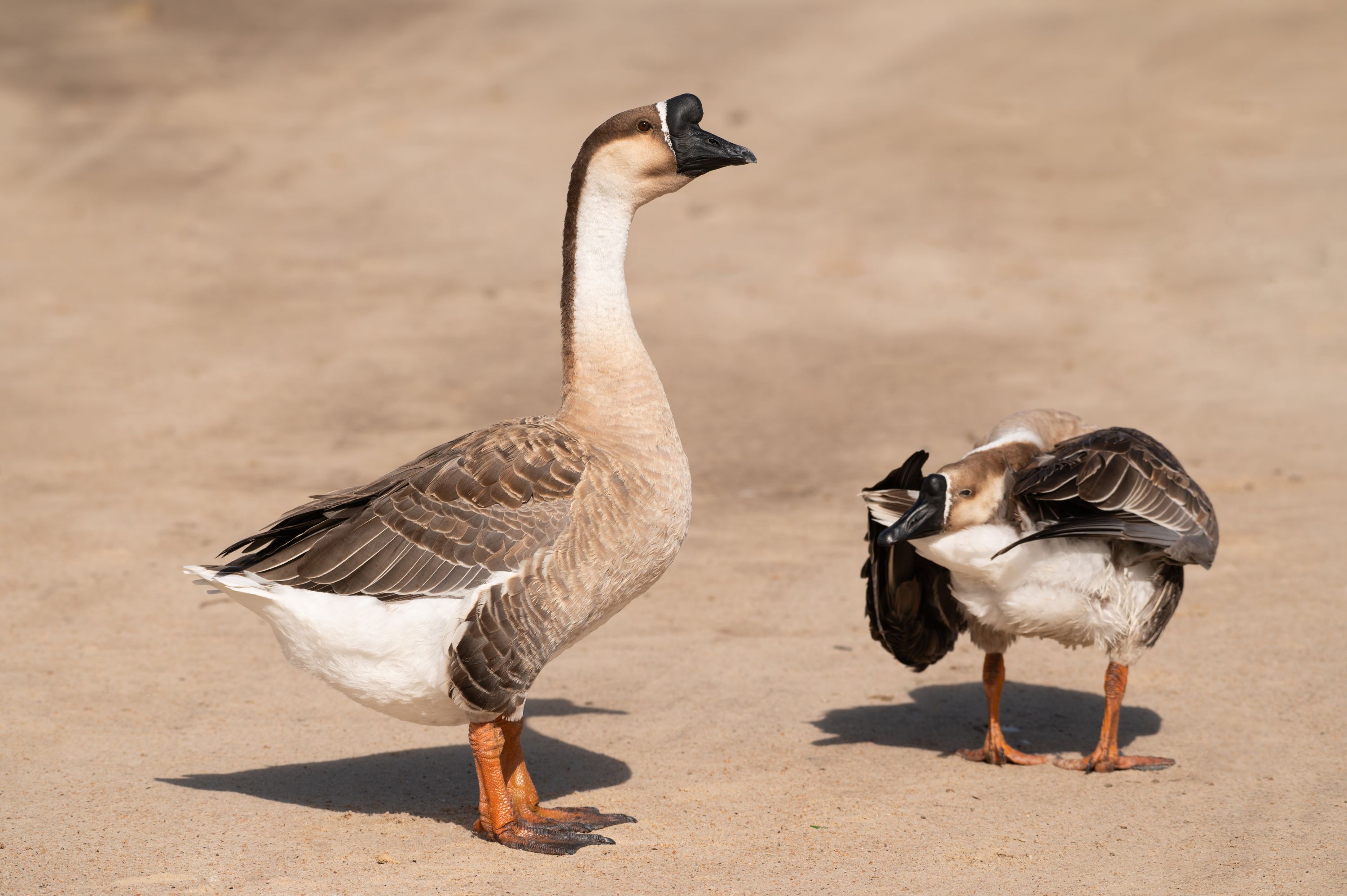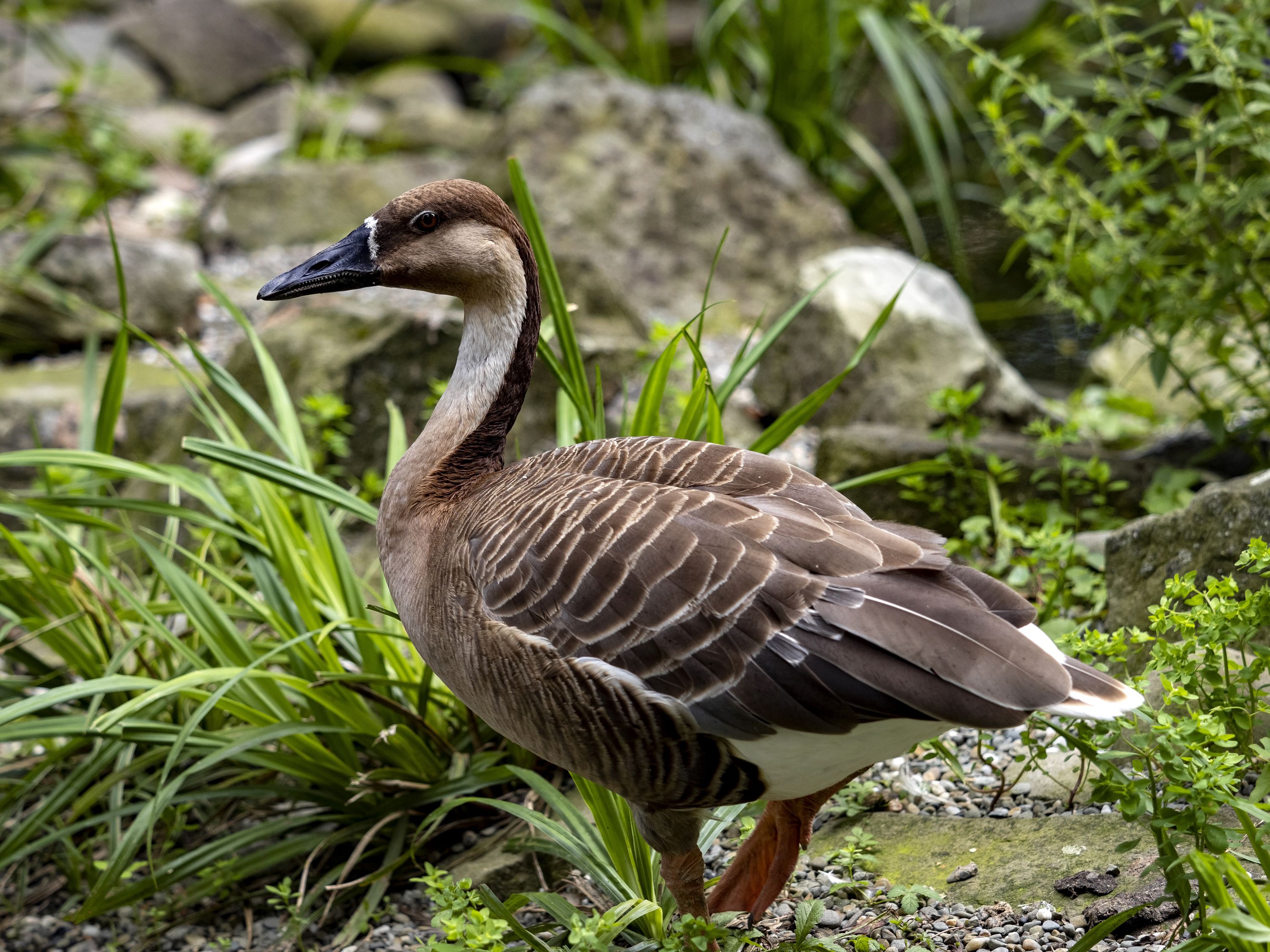
The Swan Goose: An Elegance in Flight
Introduction
The Swan Goose, an Asiatic species of waterfowl, is a bird of grace and elegance. Although not a native resident of Utah or North America, its unique characteristics and conservation status make it an interesting species for bird enthusiasts worldwide.
Description and Identification
The Swan Goose (Anser cygnoides) is distinguished by its long neck, which imparts a swan-like appearance, hence its name. It is a large goose, with adults growing up to 90 cm in length. The species is characterized by a brownish-grey body, a black bill, and a distinctive white stripe that runs from the eye to the nape of the neck. Unlike many geese, the Swan Goose's call is more reminiscent of a trumpet or horn, adding to its unique presence.
Habitat and Range
The Swan Goose is native to eastern Asia, primarily found in Mongolia, northern China, and southeastern Russia. It inhabits a variety of wetland habitats, including lakes, marshes, and rivers, often preferring areas with abundant vegetation. The species' migration patterns lead them south to warmer areas during the winter months.

Behavior and Social Structure
Swan Geese are social birds, often found in small flocks. They are particularly known for their strong pair bonds; mating pairs often stay together for many years, if not for life. During the breeding season, these geese become more territorial and can be seen performing various courtship displays, which include head bobbing and mutual preening.
Diet and Foraging
Primarily herbivorous, the Swan Goose feeds on grasses, sedges, and aquatic plants. It grazes in wet meadows and shallow waters, where it can use its long neck to reach food submerged under the water. In agricultural areas, it may also feed on crops, leading to conflicts with farmers.
Breeding and Nesting
The breeding season begins in late April or early May. Swan Geese typically nest on the ground near water, using reeds and grasses to build their nests. The female lays 5-6 eggs, and both parents take part in incubating them. Once hatched, the goslings are precocial and quickly start to feed themselves under the watchful eyes of their parents.
Conservation Status
The Swan Goose is classified as Vulnerable by the International Union for Conservation of Nature (IUCN). Its population has declined due to habitat loss, particularly the draining of wetlands for agriculture and urban development. Hunting and egg collection are additional threats faced by this species in its native range.
Swan Goose and Aviculture
While the wild populations of Swan Geese are under threat, the species is commonly kept in aviculture. The domesticated version, known as the Chinese Goose, is a popular breed in many parts of the world, including North America. However, these domestic geese differ in appearance and behavior from their wild counterparts.
The Swan Goose and Utah
While the Swan Goose is not found in the wild in Utah, the presence of its domestic relative, the Chinese Goose, in local farms and parks, can offer a glimpse into the characteristics of this elegant species. Birdwatchers in Utah may find interest in observing the behaviors and adaptations of these domestic geese, drawing parallels to their wild relatives in Asia.
Conclusion
The Swan Goose, with its distinctive appearance and swan-like elegance, is a species that embodies the diversity and beauty of the avian world. Its status as a vulnerable species highlights the importance of wetland conservation and the need for international cooperation in protecting migratory bird habitats. For bird enthusiasts, the story of the Swan Goose is a reminder of the delicate balance of ecosystems and the ongoing efforts needed to preserve the natural heritage of our planet.